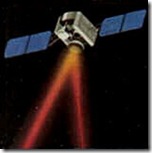By Mridul Chadha
 The Indian space agency plans to launch a satellites dedicated to monitor deforestation activities and afforestation efforts in 2013.
The Indian space agency plans to launch a satellites dedicated to monitor deforestation activities and afforestation efforts in 2013.
The minister of Environment and Forests, Mr. Jairam Ramesh, had earlier announced the plans of launching a satellite which would measure India's greenhouse gas and aerosol emissions. This satellite is scheduled for launch in 2012. Both the satellites would help India achieve important international and domestic goals.
India has its own climate change study forum known as the Indian Network for Climate Change Assessment (INCCA) which comprises of scientists from various fields and institutes from around the country. The network has been tasked with the job of studying and publishing peer-reviewed findings on the impact of climate change on the Indian ecosystem.
This group of scientists was established in order to get specific information about the impact of climate change on the health of the Himalayan glaciers, on the agricultural output and on the coastal areas of the country. Also, Indian government can also use the information gathered at the international climate change treaties to strengthen its case for opposing mandatory GHG emission targets.
'We are also working with ISRO's space application centre in Ahemdabad in modeling and monitoring the health of the Himalayan glaciers as the space agency is an integral part of our climate science and climate change negotiations team,' Ramesh said.
While making a case for an indigenous forum to study climate change, the environment minister had pointed out the discrepancies in the studies done in the developed countries. He pointed out to a study done by foreign scientists which overestimated the methane emissions from Indian paddy fields. The forum gained mileage after the 'Glaciergate' fiasco which raised serious questions about the credibility of IPCC.
The new satellite would also play a major role in the realization of an ambitious plan called the National Mission for Green India. According to a related policy document, the aim of this mission is to increase the forest cover by 10 million hectares by 2020. Such a large-scale afforestation plan, which would be mostly based on the REDD-credit scheme, would help India offset about 6.5 percent of its GHG emissions.
The information gathered through this satellite would help the government in accounting the national resources and the rate at which they are being consumed. In addition, the information can help in the demarcation of forest land inhibited by tribals which has become a major issue as the country has been witnessing several controversial land acquisition issues. And the real-time monitoring the illegal logging practices which have been a major concern for several decades.
With so many ambitious green goals lined up India certainly needs state-of-the-art technological infrastructure to not only meet those goals but also fulfill its strategic national interests. Such scientific tools would help India become an influential player at the crucial climate change treaty summits.
via Ecopolitology







0 comments:
Post a Comment